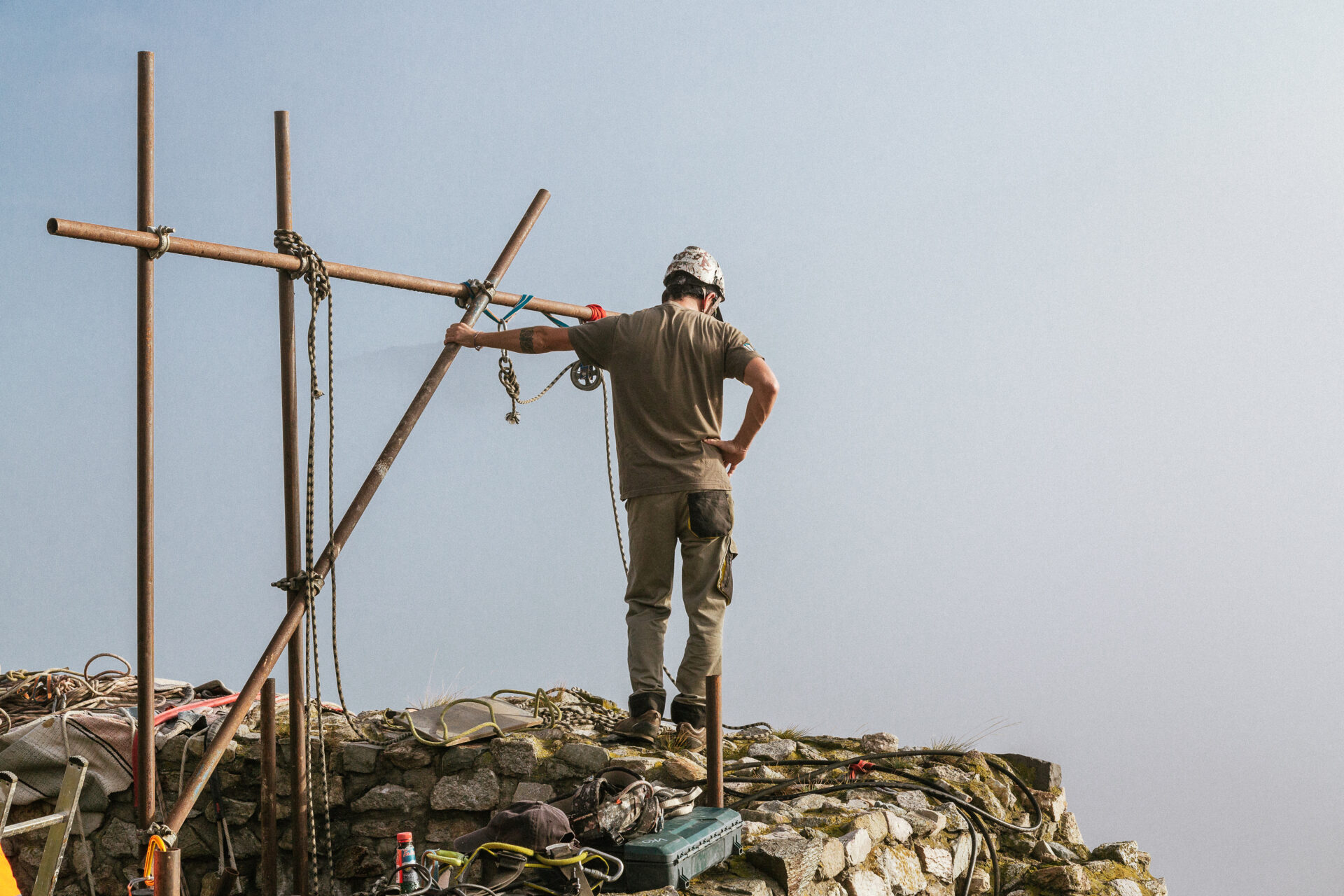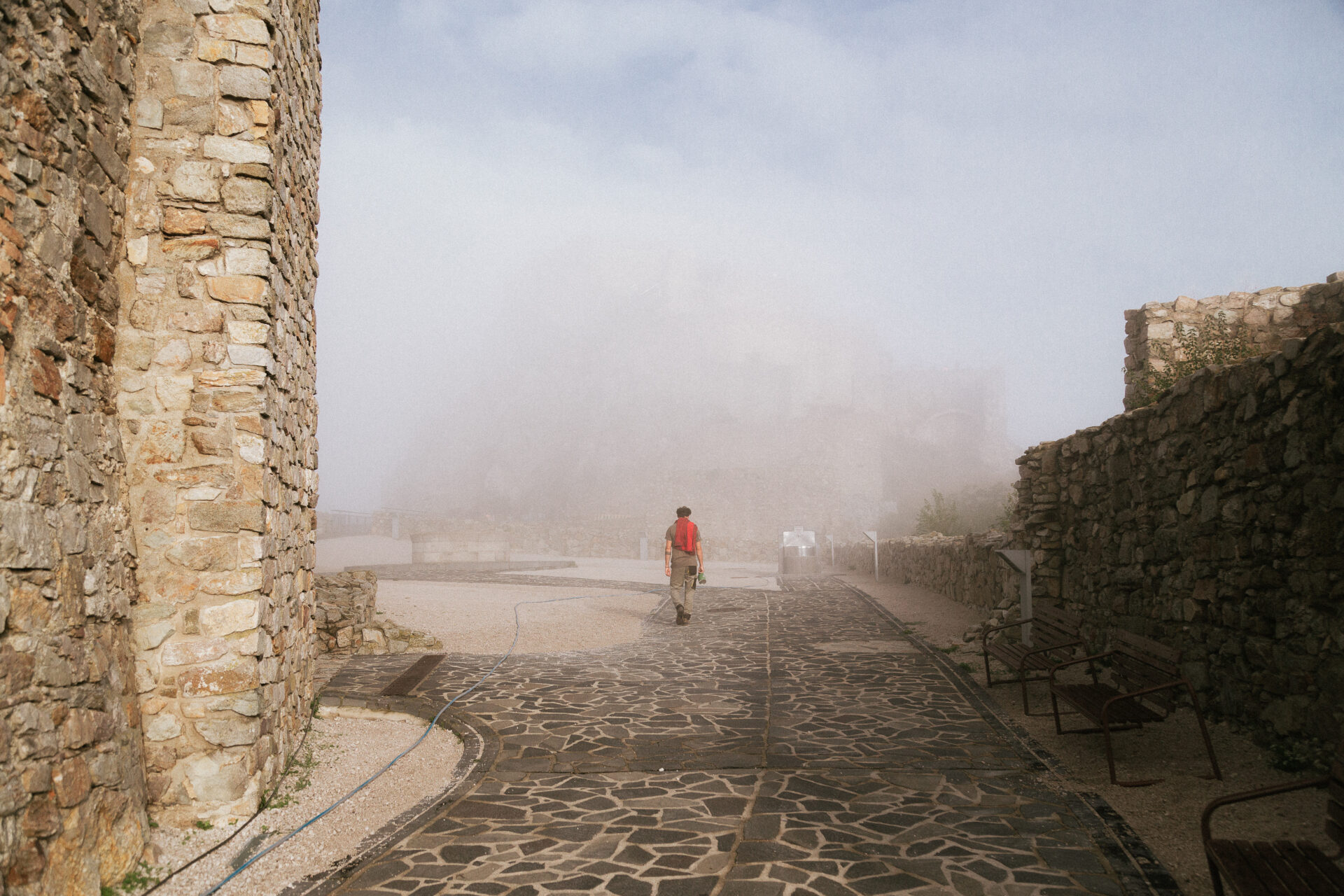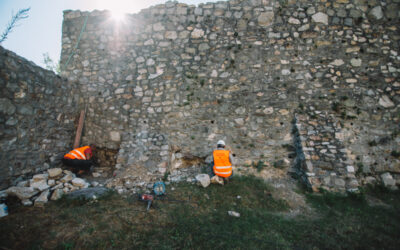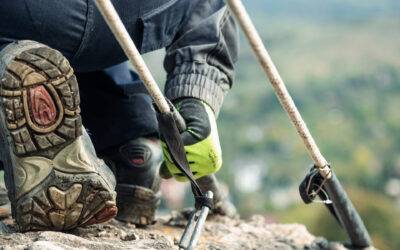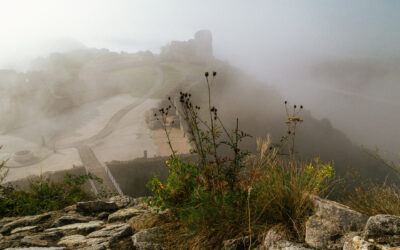Restoration of historical architectures

The castle walls were reconstructed in 2022. The lower part of the walls is brighter while the upper part is a bit darker. An interesting story about the construction industry during the Middle Ages and present day is hidden behind this line.
During the Middle Ages, import of construction materials was expensive. For example, we can find preserved castles in Spain and Portugal with walls built almost entirely of finished stones. Constructors were putting them above one another without any binding material such as lime mortar: import of which was expensive.
In Devín, lime was also used together with the stones from adjacent neighbourhoods (especially limestone), but it is obvious that nobody was allowed to waste it. Its source was situated relatively far so the builders tried to use the stones as efficiently as possible. They were looking for contact surfaces, erecting the walls slowly, continuously, row by row, and they were saving lime.


Import of construction materials is not a problem anymore. During the last century, construction industry has made a significant progress in the efficiency and speed. And the idea that ruins could also be renovated quickly – using cement – has found its way to preserve the monuments. The old methodical monument preservation instructions from several decades ago were preserved. There the cement was praised as a miracle and experts believed it could save monuments.

Import of construction materials is not a problem anymore. During the last century, construction industry has made a significant progress in the efficiency and speed. And the idea that ruins could also be renovated quickly – using cement – has found its way to preserve the monuments. The old methodical monument preservation instructions from several decades ago were preserved. There the cement was praised as a miracle and experts believed it could save monuments.

This technology was brought to Czechoslovakia from Germany, where specialists needed to save the preservable items as quickly as possible.
There were tons of cement used in the 80s to 90s of the 20th century during the renovation of Devín, but also for castles like Branč, Strečno, Spiš, etc. Cement allowed quick completion of the walls. It required nothing else than throwing the biggest stones into it to fill in as large of a volume as possible. It was quick and efficient. Roughly 40 percent of the Devín castle was finished in the last 50 years.
The restoration has been one of the largest investments for the castle in recent years . The problem is that the thermal expansion coefficient of cement is twice as high as of stone. Due to rapid changes of temperature, extremely hot and cold weather, or heavy rain, cracks develop in the masonry. As the result of the climate crisis, manifestations of the weather are more and more intense. Water leaks into the cracks, ice increases its volume and pushes the masonry even further away. Pieces of the wall fall out leaving the big stones suspended. Their fall is just a matter of time. If the whole wall gets weakened, statics will be disrupted, and the state of emergency will occur.
In 2022, experts were removing the darker layer of cement out of the cracks to be replaced by brighter lime.
Text author: Andrej Barát
More about historical architectures restoration
Cyclopean masonry
Using the slang of preservationists, this ironic expression indicates the approach applied in the past during restoration of walls in castles and ruins. When the construction works in the Devín Castle started in the 80s of the 20th century, the goal was to distinguish...
Should we save a tree or masonry?
An interesting situation was resolved during the recovery of castle masonry in 2022 when tree rescuers and monument preservationists got into a conflict. A greengage seed took roots in the masonry in the middle of the site similarly to seeds of dog roses in the other...
The castle walls will be protected by “sitting” plants
Inserting lime mortar back to the castle wall is not a simple process. Except for various additives, lime mortar needs a constant supply of moisture and carbon dioxide as well as protection from rapid temperature changes to be well hardened and as a result turn into...
